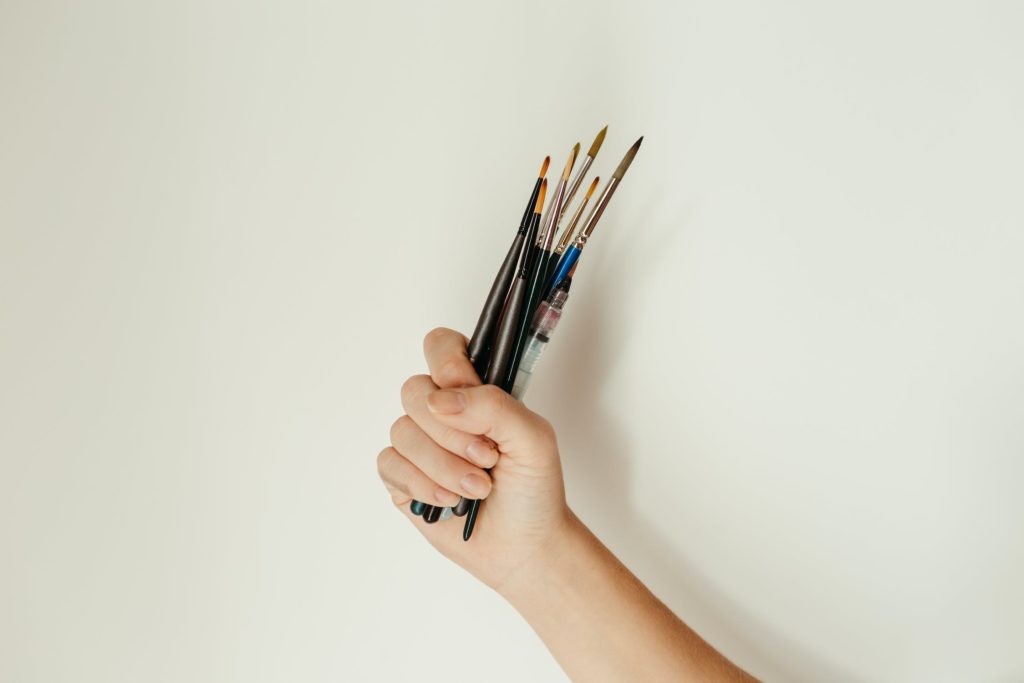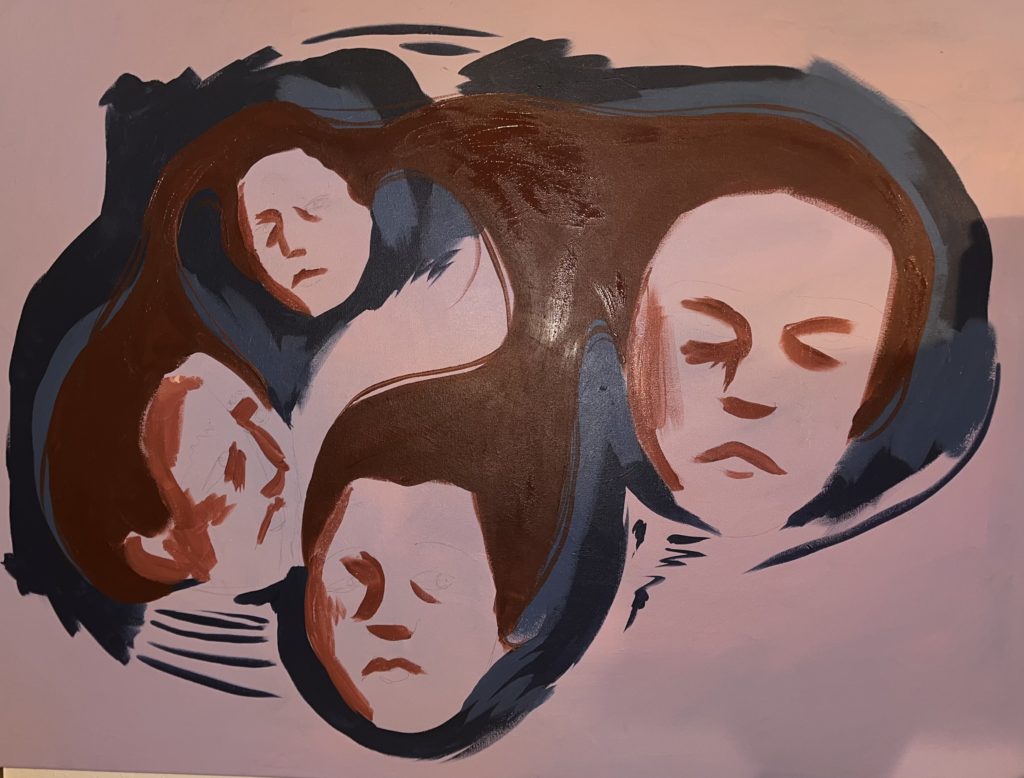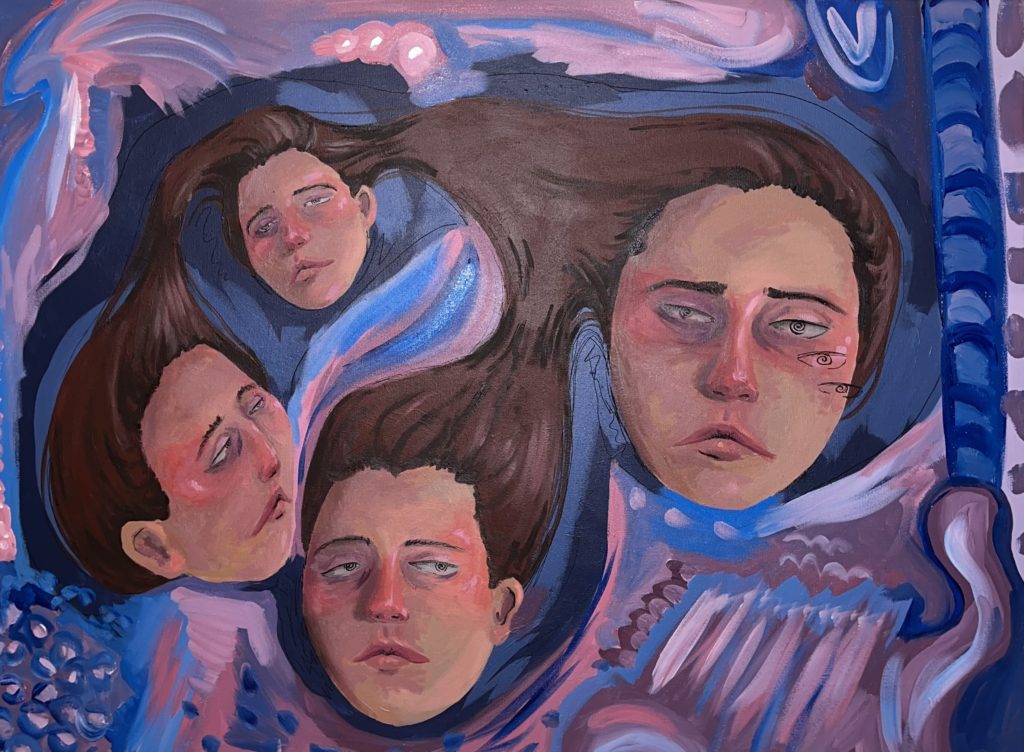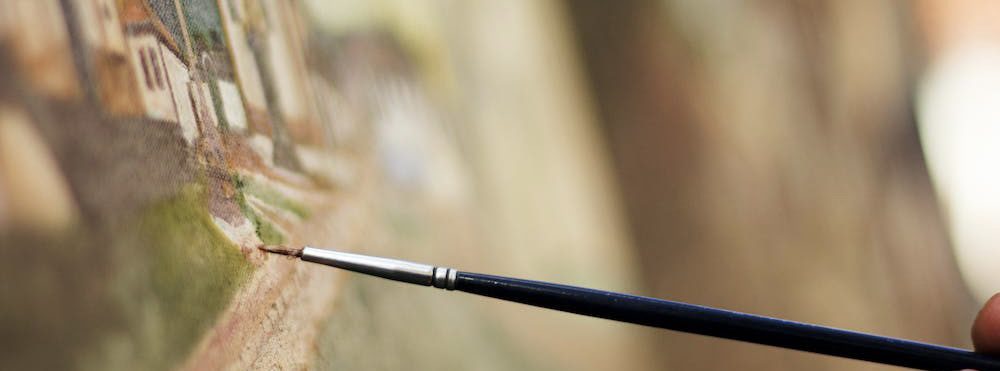You are used to painting with either Oils or Acrylics and are looking to try the other medium out, met with frustration in understanding it. What are the differences between the two?
In this post, I will cover what makes oil paints vs acrylics different from each other. Also, differences in materials used and outcomes (like drying time).
What are the main differences in oil paints vs acrylics you need to take note of?
Drying Time
First, the main difference that is important to acknowledge is drying time. Oil paint can take days/weeks to dry. Acrylic paint will take less than an hour.
However, depending on how you paint, slow drying time can be used to your advantage. It was revolutionary for me when I transitioned to oil painting. Specifically because I am actually able to blend my paints since they dont dry as fast.
The benefit to acrylic drying quickly is that you can layer a lot easier without muddying colors. Also, if you are trying to finish part of a project quickly, patience isnt a necessity.
Materials Needed
Next, the benefit of oil painting is that it can be used in many ways. There are many different mixing mediums for oil paint.
You can use things like Galkyd that will have a glossy finish. You can also use distilled turpentine with a more matte finish, linseed oils, etc.
Also, higher end products are needed. You might need to invest in some good paint brushes that you take great care of, but this can create better quality artwork.
However, if you are using acrylic paint, the benefit here is how simple all of the supplies is. Acrylic is water soluble, so all you need is a brush and some water to clean your brushes. You also dont necessarily need the best products for brushes, either. I have used some pretty old (and stale) brushes and had a great result.
What I don’t like about Acrylic Paint
The main thing that I don’t like about acrylic paint is the color changing as it dries. If you are trying to paint match to something that is already dry, good luck! The paint dries a different hue then when it is wet and being mixed.
What I don’t like about Oil Paint
The biggest problem with oil paints is the toxicity. They are so vibrant, easily workable, and essential for painting. However, they are extremely toxic and can lead to health issues. Do not let your pets be exposed to them often! Particularly, if you have cats and they get some paint on their paw from climbing on your workspace and then clean themselves, this is very bad for them.
Make sure to keep the paint out of harms way and invest in an air purifier. Also, make sure you are in a well ventilated area.
Benefits of Oil Painting:
Oil paint is a versatile medium in the world of visual arts, known for its distinctive characteristics and historical significance. Here are some aspects that make oil paint special:
- Rich and Vibrant Colors: Oil paint creates vibrant and luminous colors due to the way pigments are suspended in oil. This richness and depth of color contribute to the visual appeal of oil paintings.
- Texture and Impasto: Oil paint can be applied in various ways to create textures and impasto effects. Artists can use palette knives, brushes, and other tools to create three-dimensional texture on the canvas, adding a tactile quality to the artwork.
- Longevity and Durability: Oil paintings have proven to be durable over time, with many oil paintings from centuries ago still in relatively good condition. The chemical structure of oil paint contributes to its long-lasting nature, as it forms a flexible and stable film as it dries.
- Blending and Layering: Oil paint’s slow drying time allows for easier blending of colors and layering of paint. Artists can achieve smooth transitions between colors and build up layers to create depth, highlights, and shadows. My favorite aspect of oil painting is how true to color it is when mixing and how it dries.
- Historical Significance: Oil paint has a rich history dating back to ancient times, with notable artists. Many of the most famous paintings that exist are oil paintings. Artists such as Leonardo da Vinci, Rembrandt, and Vincent van Gogh using oil paint to create masterpieces. This historical significance adds to the mystique and allure of the medium.
- Professional Finish: Oil paintings often have a polished and professional appearance due to the ability to achieve smooth transitions and fine details. This is especially useful for realistic and highly detailed artworks.
Benefits of Acrylic Painting:
- Water-Soluble: While acrylic paint is water-resistant when dry, it is water-soluble when wet. This property enables artists to create watercolor-like effects by diluting the paint with water and using techniques such as washes and glazing.
- Wide Range of Colors: Acrylic paint comes in an extensive range of colors, including opaque, translucent, and transparent options. It can be easily mixed to create custom colors, and its vibrancy remains even after drying.
- Adaptable Surfaces: Acrylic paint can be used on a variety of surfaces, including canvas, paper, wood, fabric, and more. It can also adhere to surfaces like metal and plastic when properly prepared.
- Ease of Cleanup: Acrylic paint is water-based, which makes it easy to clean brushes and palettes with water instead of harsh solvents. This property is particularly advantageous for artists who want a safer and more environmentally friendly painting process.
- Layering and Blending: While acrylic paint dries quickly, artists can still blend and layer colors to achieve smooth transitions and create depth. By using acrylic mediums, artists can extend the drying time and achieve more nuanced blending effects.
- Beginner-Friendly: Acrylic paint is often recommended for beginners due to its ease of use, fast drying time, and forgiving nature. Mistakes can be easily painted over without waiting for prolonged drying times.

What I like to use acrylic paint for
I like to use acrylic paint as a solid base. Acrylic paint can lay very opaque with a bit of titanium white mixed in, and it is very easy to differentiate values. Underpainting with acrylic can also be good because of how quickly it dries so you are able to get started on the full composition very quickly!
Here is an example of how thick and consistent the underpainting layers are:

What I like to use oil paint for
I love to use oil paint to accentuate vibrancy in paintings. Because of how pigmented the consistency is, and how accurately the color dries, it highlights color composition beautifully.
Here is an example of how mcuh vibrancy is brought to the canvas with oil paint:


